
Locks’ Press: When literature, printmaking, and art collide
Guest post by Dr Jacqueline Reiter, an independent historian specialising in late 18th and early 19th century British political, military and naval history. Jacqueline received her PhD from Cambridge in 2006 on the role of British national defence during the French Revolutionary and Napoleonic Wars. As a volunteer at the University Library she has recently catalogued the collection which this blog discusses.
As a volunteer in Special Collections, I have just finished cataloguing a collection of books, pamphlets, and broadsides printed by Locks’ Press. This small private press published its first book in Brisbane, Australia in 1979. From 1987 to 2013 it operated in Kingston, Canada.
Locks’ Press was founded by Fred and Margaret Lock. They met as graduate students at Canada’s McMaster University in 1971, where Fred, a Cambridge graduate, was enrolled in the PhD programme in English, and Margaret was an undergraduate studying art history and studio. specialised in print making and Fred studied English. From July 1974, they lived in Brisbane, where Fred was a lecturer in English at the University of Queensland. They set up the press after Margaret studied for a year at Goldsmiths College, University of London, where one of the lecturers encouraged her to pursue her interests in printing. In 1987 the couple moved to Kingston, Ontario, where Fred had been appointed Professor of English at Queen’s University. They quickly became an integral part of the local small press, book arts and bookbinding scene: one of the most touching pieces in the collection is a leather-bound edition of Pressing Matters ([Dundas, Ontario]: The Aliquando Press, 2013), a collection of essays on the private press, dedicated to the Locks in “admiration for the fine work of Locks’ Press and your lasting contributions to our book arts community”.
Husband and wife formed a partnership: Fred selected, edited, and translated texts from Old or Middle English, Latin, or Greek, while Margaret designed, printed, and illustrated the material. The result is a body of work drawing from all of written history up to the early twentieth century. Typical examples are the Balade de Bon Conseyl by Geoffrey Chaucer, A Christmas Carol by Christina Rossetti, a series of anonymous poems taken from manuscripts in the British Library, and several songs from Shakespeare’s plays. Almost all the pieces were printed in limited runs of a few dozen copies at most. Many in this collection are hand-numbered, and sometimes also signed. Each printed item is a work of art that might have taken a year or more to complete.
Most of the pieces in the collection include at least one illustration, often a woodcut, in a simple but distinctive style. Some consist entirely of standalone images with little or no text attached. One of my favourites is a woodcut, a humorous Christmas card to be circulated among friends, described by Margaret Lock as “Fred looking at the new year”.
Other illustrations reflect the mood, or setting, of a poem or piece of prose, with Margaret’s woodcut of the Rideau Trail accompanying A.E. Housman’s On Wenlock Edge being an especially atmospheric example.
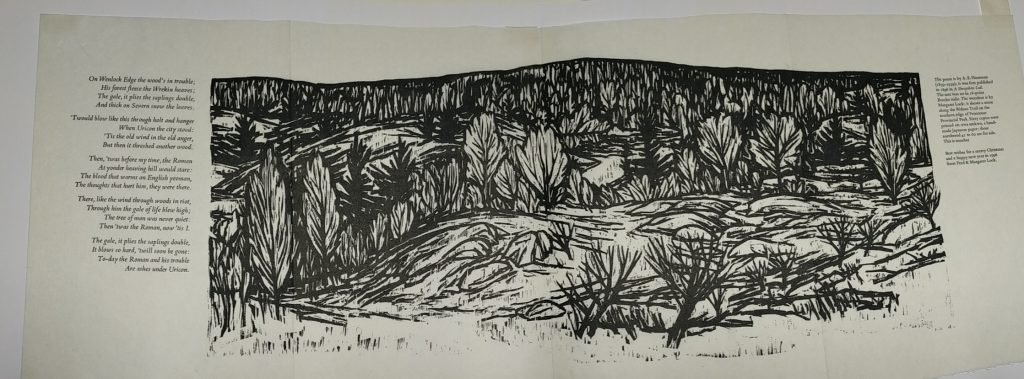
Many images are based on existing prints or paintings. Lapis Lazuli, a poem by W.B. Yeats, comes with a beautifully executed print based on Wen Jia’s 1535 painting “Stop playing the qin and start listening to the ruan”.
One book – Samuel Daniel’s Ulisses and the Syren (Kingston, Ontario: Locks’ Press, 2010) – stands out because even the text is an integral part of the artwork. The book, accordion-folded to form 12 pages, consists entirely of calligraphy hand-written by Margaret Lock, along with five illustrations engraved on lexan (plastic) plates and hand-watercoloured. Unsurprisingly, only 12 copies were printed, two of which (numbered I and II) on special paper handmade by Ontarian paper artisan Wendy Cain, a printmaker and papermaker. The University Library’s copy is number 2.
Locks’ Press ceased operations in 2013 when Fred and Margaret left Canada for the UK. In 2023 Margaret decided to donate a selection of her work at Locks’ Press to the University Library to complement works the Library already owned. It has been a privilege to work with this beautiful collection, which has taught me a great deal about private presses, bookbinding, and printmaking. I hope patrons of the Library will enjoy using this collection as much as I enjoyed cataloguing it.
Further reading
Margaret Lock, “Locks’ Press, the private press of Fred and Margaret Lock, Kingston, Ontario: A personal narrative”, McMaster University Library Digital Collections, accessed 21 October 2024 at https://digitalcollections.mcmaster.ca/hpcanpub/case-study/locks-press-private-press-fred-and-margaret-lock-kingston-ontario-personal-narrative
“Fonds RC0049 – Locks’ Press fonds” at McMaster University’s Archives & Research Collections, accessed 21 October 2024 at https://archives.mcmaster.ca/index.php/locks-press-fonds
“Locks’ Press: Kingston, Ontario”, Canadian Private Presses (2002), accessed 21 October 2024 at https://epe.lac-bac.gc.ca/100/206/301/lac-bac/presses-ef/presses/t15-550-e.html
Margaret Lock, “Locks’ Press 1979-2006”. The Private Library, 5th series, 10:1 (Spring 2007): [2]-26.
Margaret Lock, prints in the collection of the Agnes Etherington Art Centre, Kingston, Ontario: https://agnes.queensu.ca/explore/collections/search-the-collection

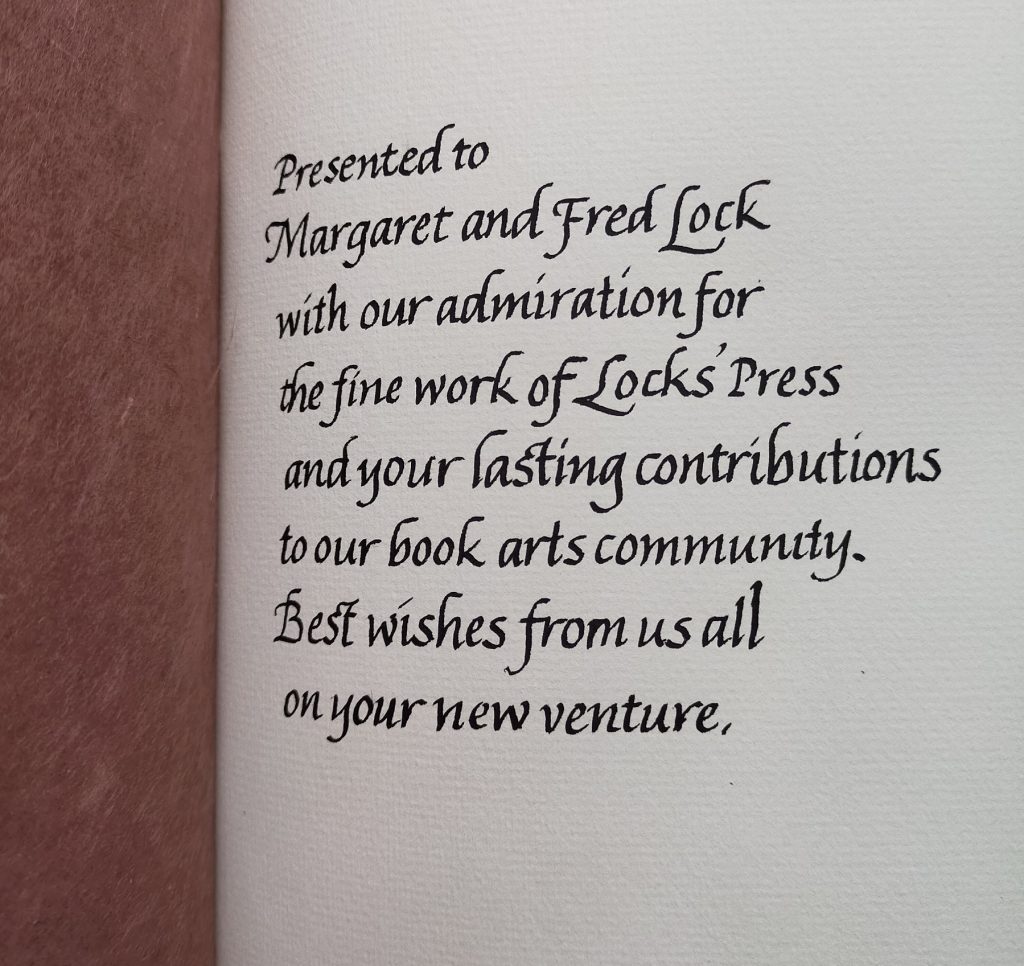
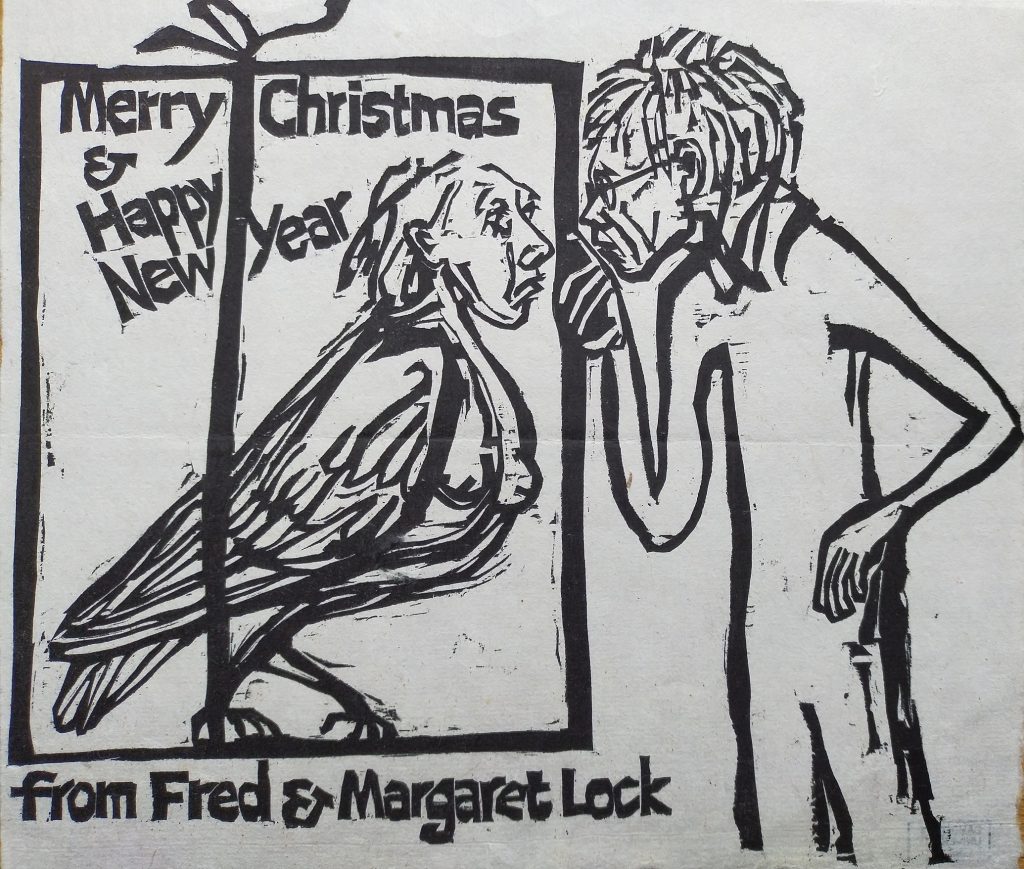
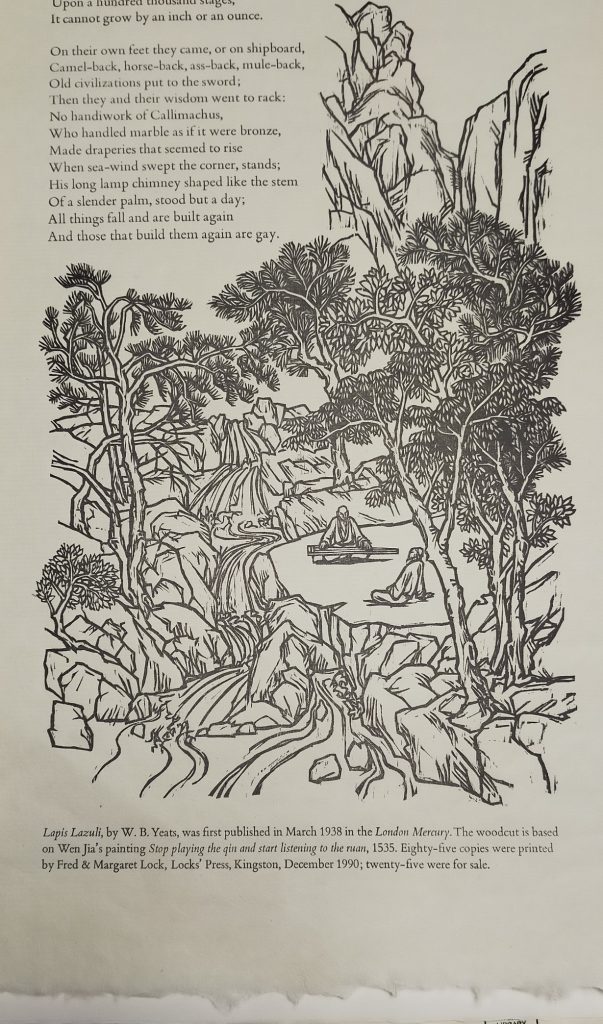
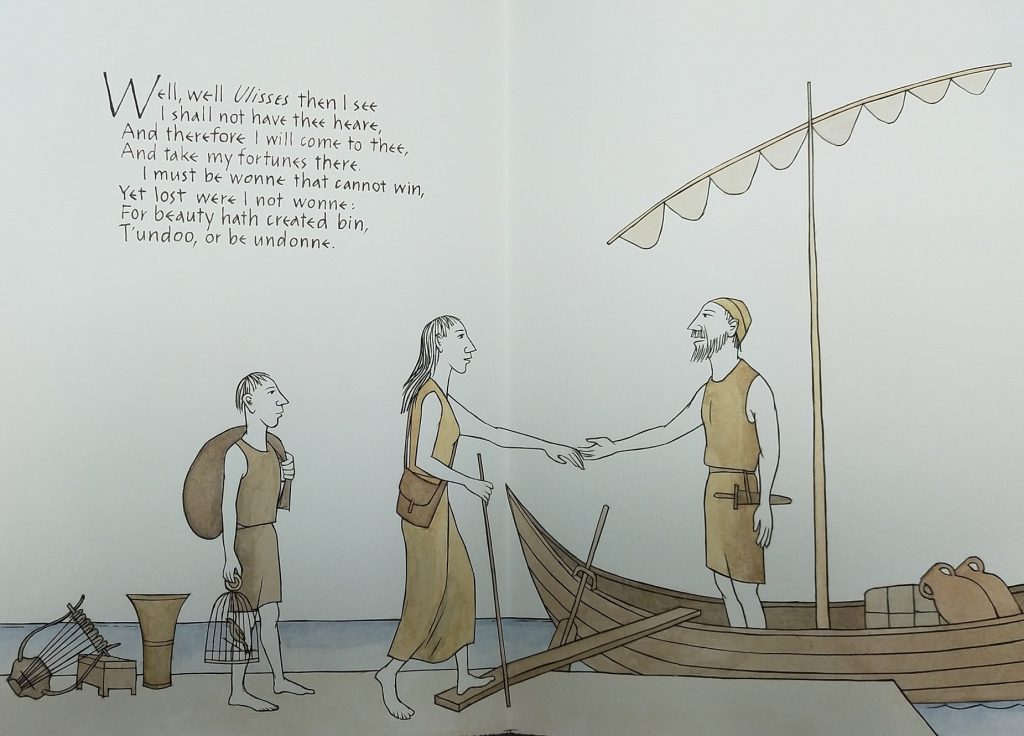

Hello! Margaret is my childhood friend in Dundas, Ontario. We were art class buddies & made projects at Margaret’s home near mine. In 6 th grade we worked on murals etc. in art class. She was an artist from the start. I moved to the US at 14 & wasn’t in touch til I visited her in Kingston many years later. I took had got into books as a magazine & book designer. Now many years on I want to find her in London in
Sept. 2025. No answer yet from email. If you can put me in touch I would be very appreciative. – Thanks, Lorna Holmes, Arizona
Thank you Lorna! How exciting. We’ve forwarded your comment to Margaret and hopefully she’ll be in touch soon. Best wishes, Liam Sims, Rare Books Specialist.